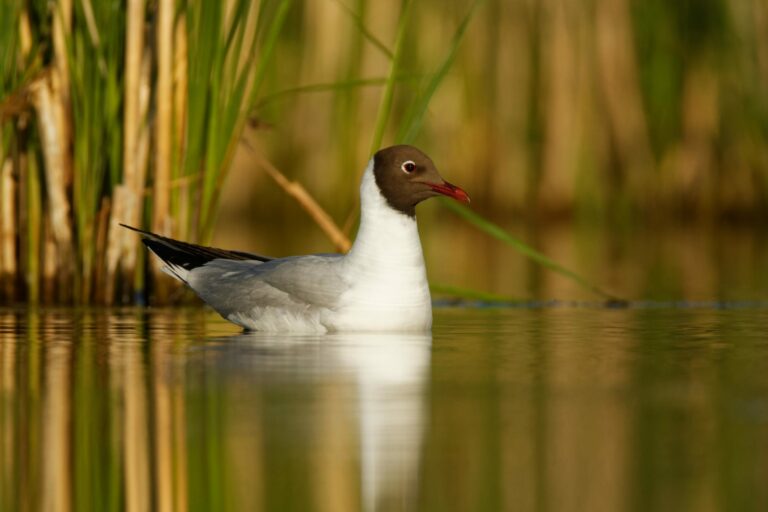Chroicocephalus ridibundus

The black-headed gull has a red beak and legs, a dark brown head, black wingtips, and the rest of its plumage is light-colored. Juveniles are usually darker in color. Adult birds can reach a body length of 38 cm (Schaefer 2018). Larus ridibundus is one of the most common and widely distributed gull species. It inhabits both coastal areas and inland regions but is usually found near water. Preferred habitats include larger lakes and harbors, for example. The black-headed gull typically nests in colonies on the ground, often in marshes, moors, or on sandbanks (Peterson et al. 1993).
Diet: Chroicocephalus ridibundus has a mixed diet, including both plant and animal matter. Food sources include worms, fish, crustaceans, and insects, as well as seeds, fruits, and even scavenged waste (Schrey 1984).
Threat status: The black-headed gull is classified as “least concern” both in Germany and globally according to the Red List of Germany and the IUCN Red List for endangered species.
-
Peterson, R et al. (1993)A Field Guide to the Birds of Britain and Europe: Houghton Mifflin Harcourt.
-
Schaefer, M (2018)Brohmer – Fauna von Deutschland. Ein Bestimmungsbuch unserer heimischen Tierwelt: Quelle & Meyer Verlag GmbH & Co.
-
Schrey, E (1984)Zur Nahrung der Lachmöwe (Larus ridibundus) im Bereich der Stadt Cuxhaven. In: Seevögel – Zeitschrift des Vereins Jordsand zum Schutz der Seevögel und der Natur e.V.